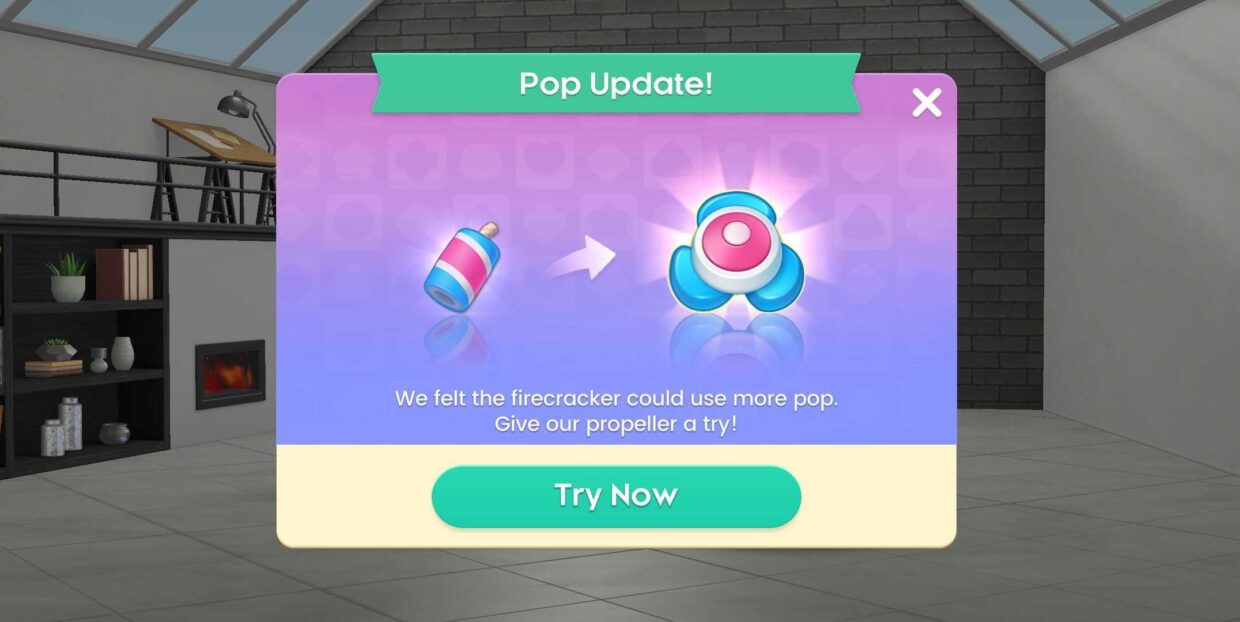
- arrow_back Home
- keyboard_arrow_right Highlights
Helping Your Players In a Smart Way
HighlightsJournal 39 Ahmetcan Demirel April 1
The point of making a game is to provide players with entertainment they value enough to spend money on. At its core, a game’s success hinges on this simple principle. But how you deliver that entertainment varies dramatically between genres, and each genre comes with different monetization strategies.
Some games rely on energy or life systems, where players hit a play limit unless they spend to continue. Others focus on boosters and power-ups that enhance the player’s chances of clearing a level. Some offer skip or ease options that allow players to pay to bypass difficulty spikes.
The most successful games do not rely on just one method. Instead, they carefully combine and calibrate these levers to appeal to the broadest possible audience. This balancing act between challenge, friction, and monetization is constantly discussed and optimized.
Yet, what often gets overlooked in these conversations is a key factor that sets market leaders apart: they make their players feel good. And sometimes, doing so means giving players tools or moments that may harm short-term revenue, but dramatically increase player trust and retention over time.
Propelling Player Satisfaction
One of the best examples of smart player-first design is found in the propeller power-up, common in Match-3 games and gaining more traction in some Blast games, too. While bombs, rockets, and other power-ups are predictable that affect specific areas around their placement, propellers are designed to target the trickiest obstacles.

This makes propellers one of the most strategic power-ups in a player’s arsenal. While bombs and rockets are great for clearing large areas or straight lines, tough levels are intentionally designed with hard-to-reach targets that these standard power-ups can’t always handle. When you’re down to your last few moves and facing an obstacle tucked away in a corner, you instinctively know that only a miracle will save the run. And that miracle often comes in the form of a well-timed propeller.
I find Royal Match to be the state of the art with regards to propeller mechanics. Players get to feel that propellers do not act arbitrarily, but are thoughtfully integrated into the game’s mechanics. That builds anticipation for future “lucky” moments, encouraging players to keep playing, converting into regular spenders and long-term loyal customers.
These moments are not random; they are engineered. And they do come with trade-offs. A player who clears a hard level with a well-timed propeller might not need to purchase an EGO (End Game Offer) that round. This can mean lost short-term revenue. But the impact on player psychology is significant. These moments create what customer-centric businesses call “customer royalty”: players develop a sense of loyalty and trust that this game will take care of them.
What’s more, these propeller moments deliver emotional payoff without undermining the core challenge. The game still demands strategic thinking. But when a solution feels out of reach, it extends a helping hand that doesn’t feel like charity, but feels like smart design. That feeling of “the game helped me just when I needed it” is far more powerful than any short-term revenue boost could deliver.
Letting Your Players Make Smart Choices
Another subtle but impactful example of smart player-centric design can be found in Toon Blast’s “take a look” feature. Typically, when a player fails a level and receives the EGO pop up, the prompt is designed to trigger impulse purchases. The player doesn’t always have full context; they’re caught in the emotional frustration of narrowly missing success, making them more likely to spend without thinking.
But Toon Blast gives players the ability to examine the board before deciding. They can assess whether the level is truly within reach or if the required moves are too far out of grasp. At first glance, this could seem like a mistake. Why give players a chance to second-guess a purchase? Why reduce the urgency that fuels impulse conversions? But this design choice reflects a deeper, long-term strategy. By allowing players to make informed decisions, Toon Blast builds credibility.
In an industry where dark and grey patterns are increasingly common where players are often nudged, tricked, or misled into spending, this small gesture of transparency stands out. It tells players: “We’re on your side.” Even though Toon Blast, like every other top grossing game, uses its fair share of monetization techniques, this feature demonstrates respect for the player.
And respect goes a long way. Players who feel manipulated might spend in the moment but are less likely to stay. Players who feel the game respects their agency will return, spend more thoughtfully, and become long-term advocates for the game.
Keeping the Board Clean and Reducing the Cognitive Burden
Royal Match and Toon Blast aren’t the only games that help their players through smart design. Candy Crush Saga and Project Makeover are two standout examples of games that keep their levels clean and focused on the player’s objective.
In these games, when the goal is to clear a set number of obstacles (crates, for example), the game doesn’t overload the board with unnecessary additional crates beyond what’s required. At first glance, it might seem trivial. But for players, especially those deep in the zone after several consecutive levels, this design choice matters.
Players don’t always check the UI target panel before every move. They rely heavily on the board for visual cues. If the board is cluttered with irrelevant obstacles, it can confuse or demoralize players. A player might waste moves on obstacles that aren’t required any more, simply because they’re present. That unnecessary complexity can lead to frustration, higher level failure rates, and ultimately churn.
By keeping the board clean through showing only the obstacles needed to meet the target, Candy Crush Saga and Project Makeover reduce cognitive load. Players feel in control. They trust that the game is challenging but not unfair. The board becomes a canvas for strategic decision-making rather than a mess of distractions.
This can unintentionally make a level more difficult, as players may feel pressured to clear every target piece on the board instead of focusing on the most accessible ones. Still, I believe this design approach offers a valuable point of comparison: it highlights how thoughtful level design can lead to a smoother, more enjoyable player experience.
Why You Should Prioritize Helping Players
The examples discussed above all come from puzzle games, but this philosophy extends well beyond that genre. In action RPGs, for instance, smart companion bots that occasionally step in to support the player (think Archero, for example) can deliver the same kind of delightful, player-first moments. These small interventions build trust and leave players feeling supported rather than exploited. Regardless of the genre, the underlying principle remains the same: design choices that make players feel cared for will always outlast short-term monetization tricks.
I know it’s tempting to chase those immediate gains. The feedback loop is fast, and the short-term revenue spikes can be satisfying. But those quick wins often come at the expense of long-term player relationships. Sustainable success in today’s market depends on subtle, thoughtful actions that may not show immediate results but create lasting player loyalty. As the mobile gaming industry continues to mature, I believe we’ll see more of these smart, player-centric design choices becoming standard practice in the top-performing games. Prioritizing your players is no longer just a nice-to-have. It’s becoming essential for standing out and thriving in an increasingly competitive space.







